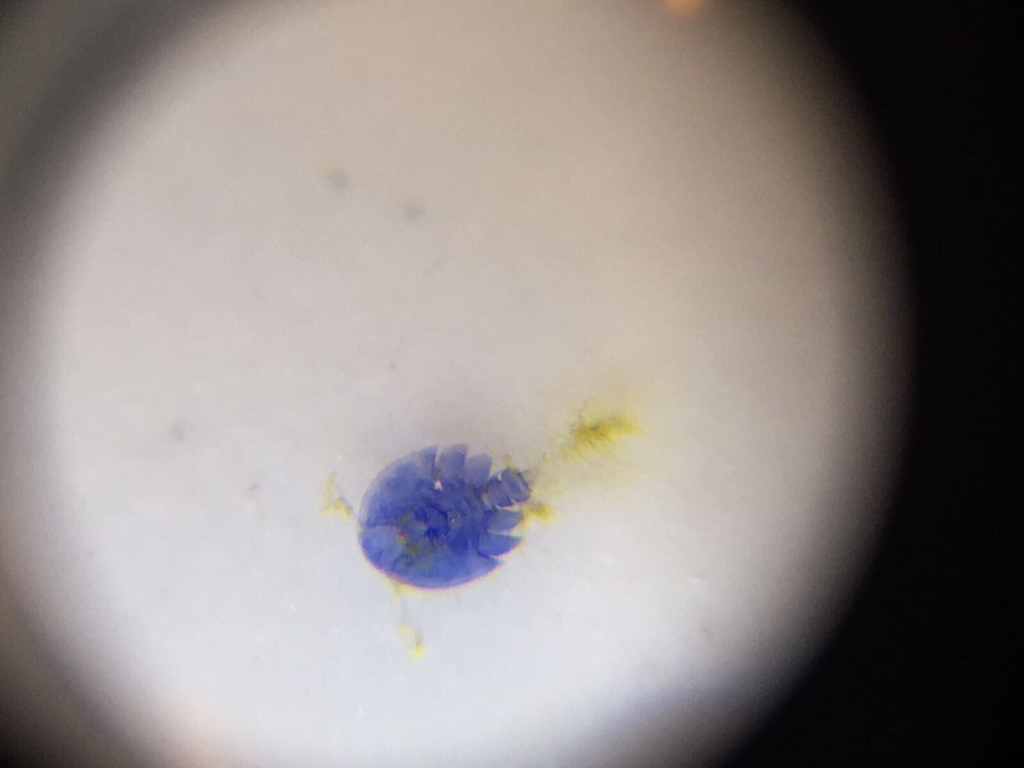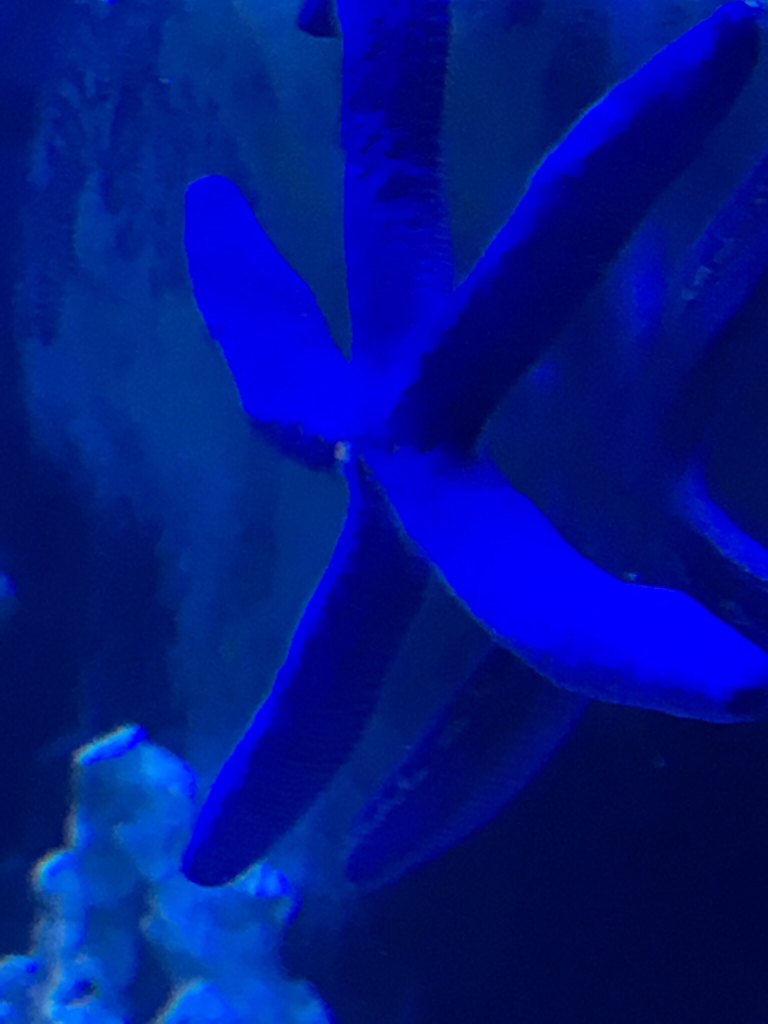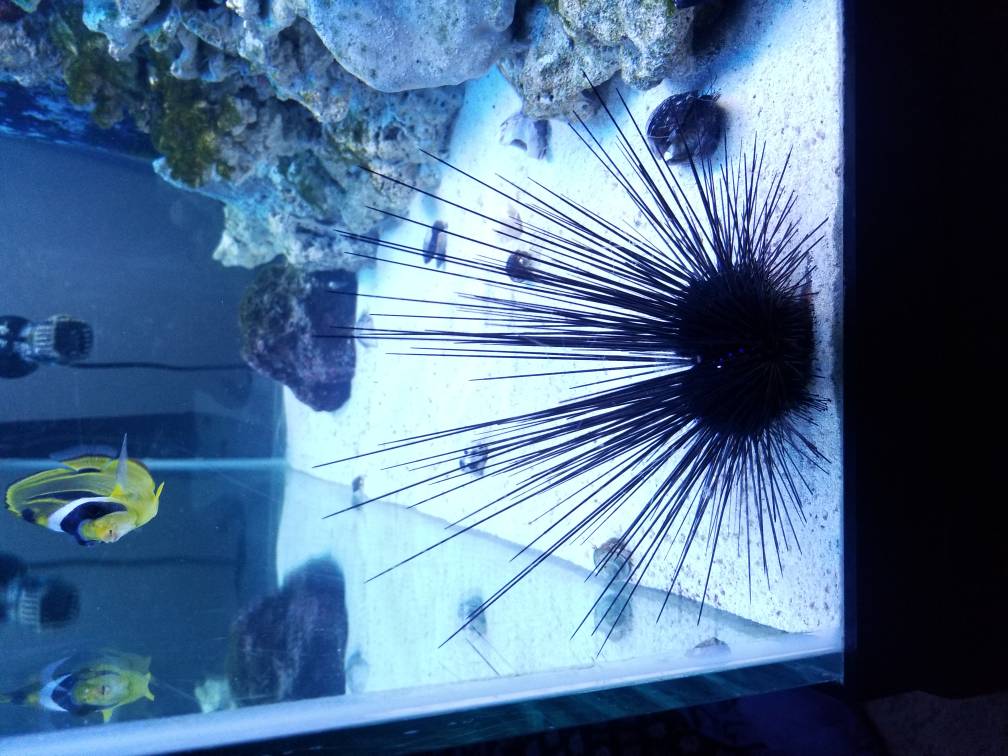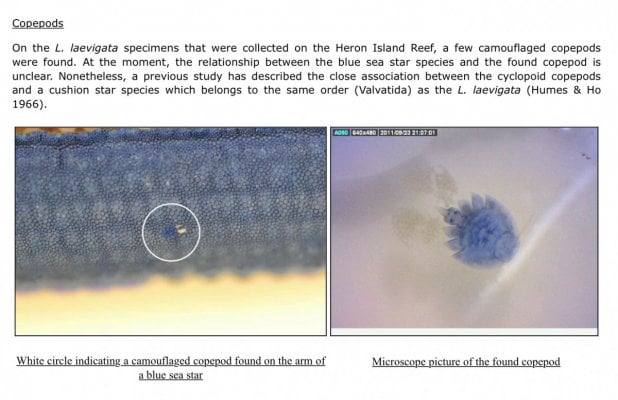YesCan you put two Seabae anemones in the same tank ??
Navigation
Install the app
How to install the app on iOS
Follow along with the video below to see how to install our site as a web app on your home screen.
Note: This feature may not be available in some browsers.
More options
You are using an out of date browser. It may not display this or other websites correctly.
You should upgrade or use an alternative browser.
You should upgrade or use an alternative browser.
Difficult and Special Care Invertebrate List
- Thread starter Ike
- Start date
- Tagged users None
- Joined
- Dec 5, 2016
- Messages
- 41
- Reaction score
- 19
I feel like the shamefaced crab should be on this list. Cause There isn't too much know about them, in comparison to other inverts. A lot of the information about them contradicts itself.
So I added a blue linckia star fish 2 weeks ago:
1st week it went hiding, I almost though it perished.
2nd week he started coming out and sticking to the glass walls apparently eating the algae film...
Now past 3 days it is stuck to one spot opposite high flow and hasn't moved.
I think something is going on.
I feel it has shrunken a little.
On the back of the body I see some 'guts' coming out.....
And today I noticed multiple 4-6 small tiny sub millimeter 'pest' blue in color attached to the hands of the starfish. I do now know what parasite it is.
See pics below... tried to magnify it with iPhone. So please bear with me.
What do you guys think is going on?


Thanks!
1st week it went hiding, I almost though it perished.
2nd week he started coming out and sticking to the glass walls apparently eating the algae film...
Now past 3 days it is stuck to one spot opposite high flow and hasn't moved.
I think something is going on.
I feel it has shrunken a little.
On the back of the body I see some 'guts' coming out.....
And today I noticed multiple 4-6 small tiny sub millimeter 'pest' blue in color attached to the hands of the starfish. I do now know what parasite it is.
See pics below... tried to magnify it with iPhone. So please bear with me.
What do you guys think is going on?


Thanks!
Maybe just pods, eating him.
- Joined
- Feb 26, 2018
- Messages
- 151
- Reaction score
- 71
I have a very large black longspine diadema setosum urchin in my 80g and do not have any problems. I worry a little about my sea hare falling onto him. They also maneuver around each other perfectly. To my knowledge, the spines have no toxin or so little that it doesn't affect a human.
About the spines, the spines are extremely brittle and break easily from livestock, equipment, or from the urchin moving around. After breaking, the end is blunt and would require a lot if force to penetrate one's skin. I've hit my hand and arms on the spines many times decently hard and never got an injury. However, when they're growing, the end is obviously sharp. Then you have to be careful. You can see how sharp they are in person pretty apparently. My judgement is that in an aquarium, the spines should be a much more forgiving problem then if in the ocean, where the spines are able to get super long and sharp.

About the spines, the spines are extremely brittle and break easily from livestock, equipment, or from the urchin moving around. After breaking, the end is blunt and would require a lot if force to penetrate one's skin. I've hit my hand and arms on the spines many times decently hard and never got an injury. However, when they're growing, the end is obviously sharp. Then you have to be careful. You can see how sharp they are in person pretty apparently. My judgement is that in an aquarium, the spines should be a much more forgiving problem then if in the ocean, where the spines are able to get super long and sharp.

- Joined
- Aug 8, 2018
- Messages
- 29
- Reaction score
- 7
m
my lfs actually carries cone shells. their tank has got a bunch of signs saying DANGER THIS ANIMAL CAN KILL and the tank itself is blocked off with a piece of wood. will NOT be buying himInverts and Corals Best Avoided Or Left To Experts:
Cephalopods, Octopi, Cuttlefish, Squid (Class Cephalopoda): These must have species tanks and require a lot of research before attempting them
Non-photosynyhetic Corals and Gorgonids (Sun polyps, Carnation, Devils Hand, Chili Coral, etc.): If it's a soft coral and not green or brown in part and is very vividly colored odds are it's non-photosynthetic and requires more small particles of food than most aquarists are willing or able to provide.
Christmas Tree Worms (Spirobranchus spp.): Filters feeders that rarely live long in home aquaria
Coco Worms (Protula bispiralis): See above
Flowerpot Coral (Goniopora spp.): Some progress has been made, but still miserably low survival rates and mopst are still doomed, stokesi is the most common and seems to be among the most difficult in the genus
Feather Starfish (Himerometra sp.): Require huge amounts of flow and large amounts of tiny planktonic organisms
Basket Starfish (Astrophyton muricatum): Similar to feather stars above, but even less suitable for typical aquarium life
Crown of Thorns Starfish (Acanthaster planci): Just seeing if you're still paying attention...
Linckia Starfish (Linckia spp.): Disease issues and shipping stress kill a large percentage, the ones that remain often slowly starve to death
Wild Acropora Corals (Acropora spp.): Wild colonies can be particularly adapted to flow and light from their natural environment and often do poorly once in aquaria, seek out hardier aquacultured specimens
Sea Apples (Pseudocolochirus spp.): Often slowly waste away if not offered large amounts of food appropriate for filter feeders, also a chance for toxins to be released and possibly kill other organisms
Margarita Snails (Margarites pupillus): From temperate waters and don't seem to adapt to warmer waters as well as some other clean up crew members from similar waters
Green Brittle Starfish (Ophioarachna incrassata): Can get large and boisterous, some reports of them actually ambushing unsuspecting or sleeping fish
Sea Pens (Order Pennatulacea): Terrible additions to home aquaria and are very short-lived
Sea Slugs and Nudibranchs (Subclass Opisthobranchia): Very specialized feeders, a couple can be useful to elimate pests but it is very difficult to sustain a food source for even those, they're also very prone to damage by overflows and pumps
Flame Scallop (Lima scabra): Filter feeders that usually waste away in home aquaria, the same goes for other scallops which are less frequently encountered in the trade
Anemones (various genera): Most anemones should be placed in specialty tanks and also have very poor survival rates, beginners should not attempt Anemones without extensive research
Bright Yellow Anemones (dyed; and done most commonly with Sebae, but also seen on occasion with long tentacle and carpet anemones
Harlequin/Clown Shrimp (Hymenocera picta): Must have live starfish to feed on to survive
Camel/Mechanical Shrimp (Rhynchocinetes durbanensis): Not reef safe but often sold as as such
Elegance Coral (Catalaphyllia jardinei): Recent poor survival possibly due to a disease, other factors might relate to them coming from higher nutrient environments
Pipe Organ Coral (Tubipora Musica): Often hacked off from a larger colony, recent survival seems better than in the past
"Decorative" Sponges (Porifera) Often hacked off from large colonies, also exposed to air for too long which often leads to their demise, bright orange and yellow colors are common
Horseshoe Crab (various genera Limulus polyphemus most common) Grow too large for home aquaria but will die of starvation long before they have the chance
Venomous and/or Toxic Species:
Blue Ring Octopus (Hapalochlaena spp.)
Flower Urchins (Toxopneustes pileolus): Rare in the trade, but outside the trade there are reported deaths from this species
Black Longspined Sea Urchins (Diadema spp.): Can inflict painful wounds, some debate exists whether or not they are really venomous, but it's wise to handle all urchins with care
Cone Shells (Conus spp.): Rarely encountered in the aquarium trade, can be deadly
Box Jellyfish (Chironex fleckeri): Quite deadly but of no concern to aquarists
Hell's Fire Anemone (family Actinodendronidae): While all anemones are capable of stinging, this is the one of the few to be concerned about, very painful stings
Hydroids: Usually just cause skin irritation if anything
Fire Coral (Millepora spp.): See hydroids
Sea Mat, Button Polyps, Zoanthids (family Zoanthidae): Some of these can contain Palytoxin which can be quite dangerous, they're quite frequently harmless but if you want to err on the side of caution rubber gloves are a good idea when handling them, as are goggles when fragging them
It seems to be the copepod described here, could just be a commensal.So I added a blue linckia star fish 2 weeks ago:
1st week it went hiding, I almost though it perished.
2nd week he started coming out and sticking to the glass walls apparently eating the algae film...
Now past 3 days it is stuck to one spot opposite high flow and hasn't moved.
I think something is going on.
I feel it has shrunken a little.
On the back of the body I see some 'guts' coming out.....
And today I noticed multiple 4-6 small tiny sub millimeter 'pest' blue in color attached to the hands of the starfish. I do now know what parasite it is.
See pics below... tried to magnify it with iPhone. So please bear with me.
What do you guys think is going on?


Thanks!
Attachments
i cant think
Wrasse Addict
View Badges
Excellence Award
Reef Tank 365
Article Contributor
UK Reef Club Member
Rock Pool Reef Keepers
My Tank Thread
My Aquarium Showcase
I know this is a rather dead thread but has there been any success with a sea pen? If so what is the key? I’ve recently been looking at these animals for my Red Sea Max Nano and figured since I plan for a clam eventually I could also try a sea pen? Also are there any other Indonesian inverts that appear on this list that people have had success with?
Similar threads
- Replies
- 3
- Views
- 155















